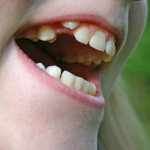
Around 4% of patients referred to orthodontists have impacted canines and about one third of these canines are impacted labially. Once sufficient space has been created orthodontically eruption may occur although surgical exposure may be necessary. Excisional uncovering (gingivectomy), apically positioned flap, and closed eruption are the 3 approaches normally employed.
The aim of this review was to compare the impact of different surgical approaches to the management of labially impacted canines on periodontal health
Methods
The PubMed, Cochrane Central Register of Controlled Trials, LILACS, and Scopus databases were searched with no language restrictions. Randomised controlled trials, controlled clinical trials, and observational studies (cohort and case-control studies) of patients receiving surgical treatment to correct labially impacted maxillary canines were considered.
Study selection, data abstraction and quality assessment was carried out independently by two reviewers. Internal validity was rated as good, fair or poor using the U.S. Preventive Services Task Force approach. A narrative synthesis of the findings was presented.
Results
- 3 studies (1 controlled trial, 2 retrospective cohorts) involving a total of 94 patients were included
- No included study examined the periodontal outcome of the closed eruption technique.
- Excisional uncovering was reported to have a detrimental effect on the periodontium (bleeding of the gingival margin, 29% vs 7% in the control group; gingival recession, -0.5 mm [SD, 1.0] vs -1.5 mm [SD, 0.8] in the control group; and width of keratinized gingiva, 2.6 mm [SD, 1.4] vs 4.1 mm [SD, 1.5] in the control group).
- Impacted canines uncovered with an apically positioned flap had periodontal outcomes comparable with those of untreated teeth.
Conclusions
The authors concluded
The current literature is insufficient to determine which surgical procedure is better for periodontal health to uncover labially impacted canines. Excisional uncovering of labially impacted canines was reported to result in less-favorable periodontal outcomes, whereas labially impacted canines uncovered with the apically positioned flap technique seemed to show periodontal outcomes comparable with those of untreated teeth; none of the included studies examined the periodontal outcome of the closed eruption technique. Therefore, there is a definite need for more well-designed research, especially regarding the comparison between the closed technique and the apically positioned flap technique.
Comments
The authors have searched a number of databases for this review but despite broad acceptance criteria on 3 small studied were identified. The reviewers highlight that all three studies have small sample sizes and none of the included studies had undertaken a sample size calculation. The included studies were all considered to be at high risk of bias so high quality randomised controlled trials are needed.
Links
Primary paper
Incerti-Parenti S, Checchi V, Ippolito DR, Gracco A, Alessandri-Bonetti G. Periodontal status after surgical-orthodontic treatment of labially impacted canines with different surgical techniques: A systematic review. Am J Orthod Dentofacial Orthop. 2016 Apr;149(4):463-72. doi: 10.1016/j.ajodo.2015.10.019. Review. PubMed PMID: 27021450.

Impacted canines – insufficient evidence for best surgical approach for good periodontal outcomes https://t.co/62ckKKD8wd
impacted canines – insufficient evidence to determine which surgical procedure is better for periodontal health https://t.co/62ckKKD8wd
@TheDentalElf Not only surgical procedure,pre-&post-operation mantainace(ortho miniscrew) intervention’s also useful to periodontal maintain
Which surgical procedure to uncover labially impacted canines is better for periodontal health? https://t.co/62ckKKD8wd
Insufficient evidence for best surgical approach for impacted canines to achieve good periodontal outcomes https://t.co/62ckKKD8wd
Don’t miss- Impacted canines – insufficient evidence for best surgical approach for good periodontal outcomes https://t.co/62ckKKD8wd
Impacted canines-insufficient evidence for best surgical approach https://t.co/5C5l29qAYP